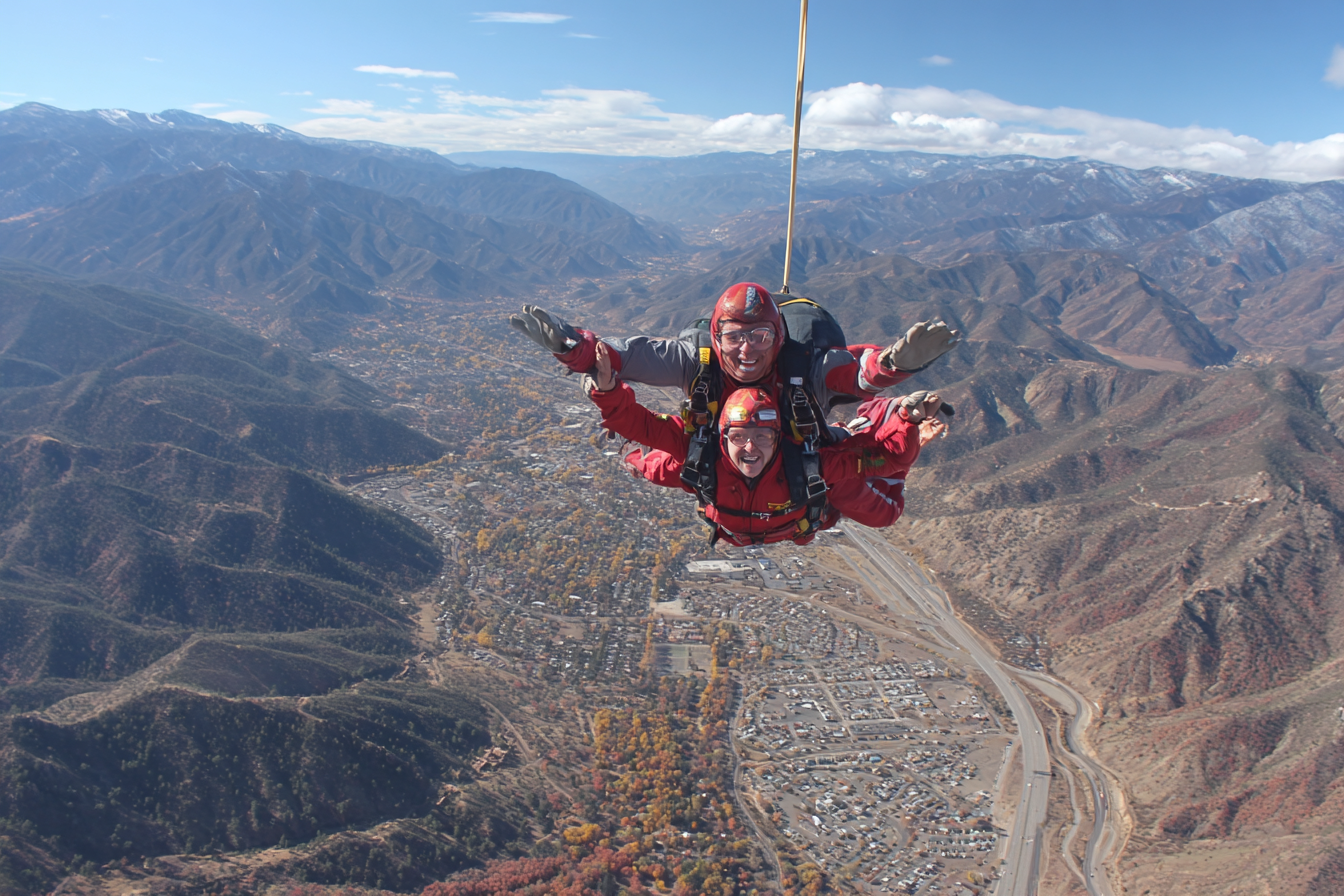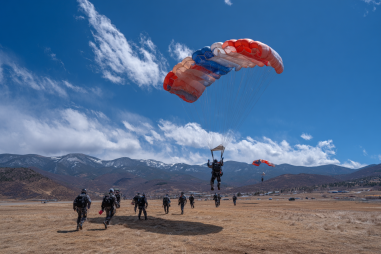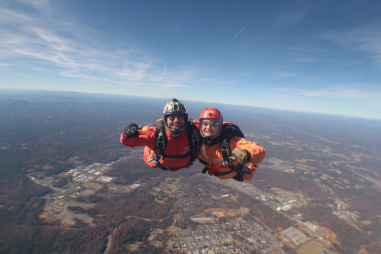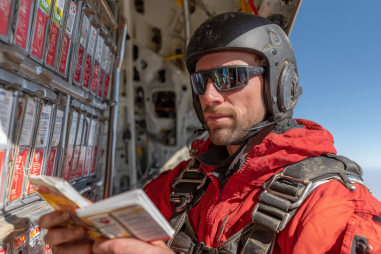For those eager to take the exhilarating leap into skydiving, understanding the training process is essential. The Accelerated Freefall (AFF) skydiving training program offers an efficient and comprehensive way to become a solo skydiver. Designed to equip students with the necessary skills and confidence quickly, AFF stands out as a popular training method worldwide. In this article, we will explore everything you need to know about the AFF skydiving training program—from its unique approach and training structure to safety aspects and certification. If skydiving excites you, read on to find out if AFF is the right path for your journey.
An Introduction to the AFF Training Program
The Accelerated Freefall (AFF) program is a structured, instructor-supervised training method developed to accelerate a student’s ability to skydive solo. Unlike more traditional jump training methods that might require students to undertake static line jumps or tandem jumps before freefalling solo, AFF allows students to experience freefall from the very beginning of their training, albeit with a high level of safety and guidance.
The program is designed to take complete beginners and rapidly develop their skills through a series of progressively challenging levels, which typically involve jumping with one or two instructors who provide in-air guidance and support. The goal is to build competence, confidence, and situational awareness, culminating in the student’s ability to execute safe solo skydive jumps.
How AFF Differs from Other Skydiving Training Methods
Skydiving schools often offer a range of introductory courses, but AFF stands out because it emphasizes immediate freefall experience. Here’s how it compares:
- Tandem Jumps: In a tandem jump, the student is harnessed to an instructor who controls the entire descent. It’s popular for first-time jumpers who want to experience the thrill without managing the technical aspects. However, tandem does not teach the student to skydive independently.
- Static Line Training: Static line methods involve deploying the parachute automatically soon after exiting the aircraft, eliminating an initial freefall. This allows the student to focus on canopy control before freefall skills but takes longer to progress to solo status.
- AFF Training: AFF immediately introduces freefall, with two instructors jumping alongside the student providing in-air coaching and safety intervention if necessary. This offers accelerated learning and a direct path to becoming a solo skydiver.
By focusing on early freefall exposure and instructor support, AFF accelerates the learning curve and helps new jumpers develop critical skills under supervision.
Structure of AFF Training Levels
The AFF program is divided into multiple levels, each designed to gradually build the student’s skills and confidence. While specifics can vary slightly between schools, the general structure includes:
- Level 1 & 2: Initial freefall jumps with two instructors holding onto the student, focusing on stable body position as the foundation.
- Level 3 to 5: More complex freefall maneuvers such as tracking (moving horizontally in the air), controlled turns, and altitude awareness, with a gradual reduction in instructor input.
- Levels 6 to 7: Students jump with one instructor, practicing deployment and emergency procedures, refining landing accuracy, and perfecting canopy control skills.
After successfully completing the AFF levels, students typically progress to solo jumps without instructors, though under some level of supervision depending on local regulations.
Skills Developed at Each Stage
Each AFF jump level focuses on mastering specific skills essential for safe and independent skydiving:
- Body Positioning: Maintaining a stable belly-to-earth position during freefall is critical to controlling the descent and preparing for deployment.
- Altitude Awareness: Learning to keep track of your altitude to ensure timely deployment of the parachute.
- Freefall Maneuvers: Skills such as tracking, turns, and maintaining stability in variable conditions.
- Emergency Procedures: Identifying malfunctions, cutting away malfunctioning parachutes, and deploying reserve chutes safely.
- Canopy Control: Steering, flare timing, and safe landing techniques once under the canopy.
By layering these skills progressively, the AFF program ensures that students become well-rounded skydivers ready for solo experiences.
Safety Protocols and the Instructor’s Role
Safety is paramount in AFF training. From the moment a student boards the airplane to the final landing, meticulous protocols are followed. The instructor’s role is crucial throughout the training process:
- Pre-Jump Briefings: Instructors provide thorough explanations of the procedures, equipment, and expectations for each level.
- In-Air Monitoring: During the jump, two instructors accompany the student, holding onto them to maintain stability and offering real-time corrections if needed.
- Emergency Assistance: Instructors are trained to intervene in case of student malfunction or loss of situational awareness, including deploying the student’s reserve parachute safely.
- Post-Jump Debriefings: After landing, instructors review the jump with the student, providing constructive feedback and guidance for improvement.
These safety measures create a supportive environment where students can learn efficiently without compromising their wellbeing.
Equipment Used During AFF Training
The equipment used in AFF training is designed to be reliable, safe, and user-friendly for beginners. Key gear includes:
- Parachute System: A dual-parachute rig featuring a main canopy and a reserve canopy with an automatic activation device (AAD) as a safety backup.
- Helmet and Goggles: To protect the head during exit and flight and ensure clear vision throughout the jump.
- Altimeter: A wrist or chest-mounted device giving real-time altitude readings to maintain awareness during freefall.
- Jumpsuit: Aerodynamic clothing designed to reduce drag and improve control during freefall.
Instructors also carry radios or other communication devices to assist in coordination, and parachute systems are always inspected thoroughly before each jump.
Progressing to Solo Jump Status
Successfully completing the AFF levels paves the way for solo jumps. Once the student demonstrates proficiency in freefall stability, canopy control, and emergency procedures, they gain the green light to jump without instructors holding onto them. However, solo jumps initially still occur under instructor supervision on the ground and sometimes observers in the air, depending on the skydiving center’s practices.
Reaching solo status is a significant milestone that marks the transition from student to independent skydiver. It requires both skill mastery and confidence developed through the progressive nature of the AFF curriculum.
Preparing for Certification via AFF
Beyond solo jumping, many AFF students aim for certification, often the United States Parachute Association (USPA) A-License or equivalent in other countries. Certification demonstrates a level of competence that can allow for unsupervised jumps, participation in advanced courses, and entry into the wider skydiving community.
To prepare for certification, students need to complete a required number of jumps, exhibit safe jumping behavior, and pass written and practical exams covering skydiving theory, equipment, emergency procedures, and canopy piloting skills.
AFF training provides the foundational knowledge and experience for this journey. Some schools offer integrated programs that combine training and certification preparation, streamlining the process.
Is AFF the Right Training Program for You?
If you’re passionate about skydiving and want to start jumping solo as soon as possible under expert supervision, AFF is an excellent choice. Its accelerated pace is ideal for those ready to immerse themselves fully in the sport and handle responsibility early on. The emphasis on freefall from day one is thrilling but also means the program demands focus, physical fitness, and a willingness to learn quickly.
However, for those who prefer a gentler introduction or want to experience skydiving without immediate freefall exposure, tandem or static line methods may be more suitable. Ultimately, the best choice depends on your goals, learning style, and comfort level.
The AFF program’s reputation for thoroughness, safety, and efficiency makes it a top pick for aspiring solo skydivers worldwide, and many graduates go on to enjoy active and rewarding skydiving careers.







